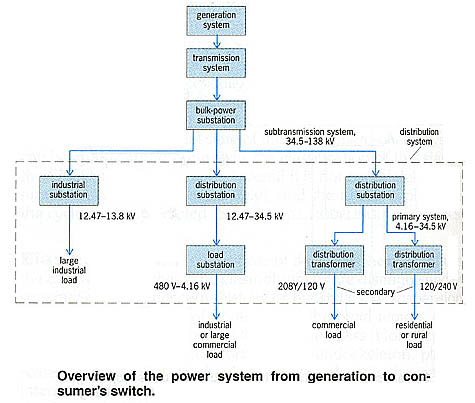Systems that comprise those parts of an electric power system between the sub- transmission system and the consumers’ service switches. It includes distribution substations; primary distribution feeders; distribution transformers; secondary circuits, including the services to the consumer; and appropriate protective and control devices. Sometimes, the subtransmission system is also included in the definition.

AMAZON multi-meters discounts AMAZON oscilloscope discounts
The subtransmission circuits of a typical distribution system (see illustration) deliver electric power from bulk power sources to the distribution substations. The subtransmission voltage is usually between 34.5 and 138 kV The distribution substation, which is made up of power transformers together with the necessary voltage-regulating apparatus, bus-bars, and switchgear, reduces the subtransmission voltage to a lower primary system voltage for local distribution. The three-phase primary feeder, which usually operates at voltages from 4.16 to 34.5 kV, distributes electric power from the low-voltage bus of the substation to its load center, where it branches into three-phase subfeeders and three-phase and occasionally single-phase laterals. Most of the three-phase distribution system lines consist of three-phase conductors and a common or neutral conductor, making a total of four wires. Single-phase branches (made up of two wires) supplied from the three-phase mains provide power to residences, small stores, and farms. Loads are connected in parallel to common power-supply circuits.